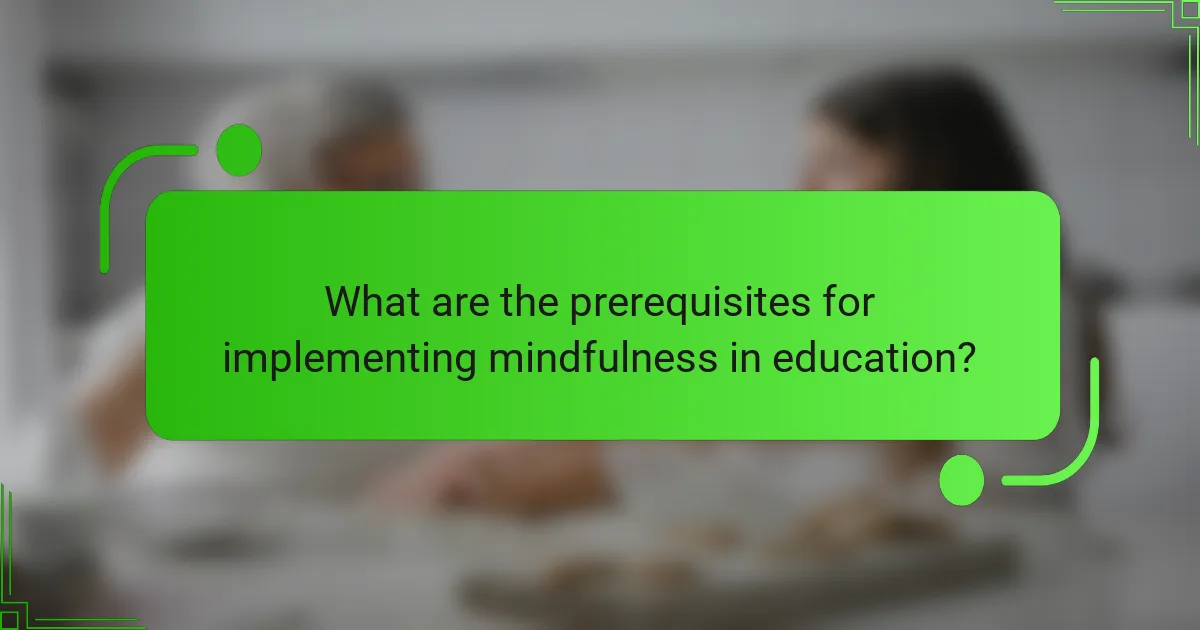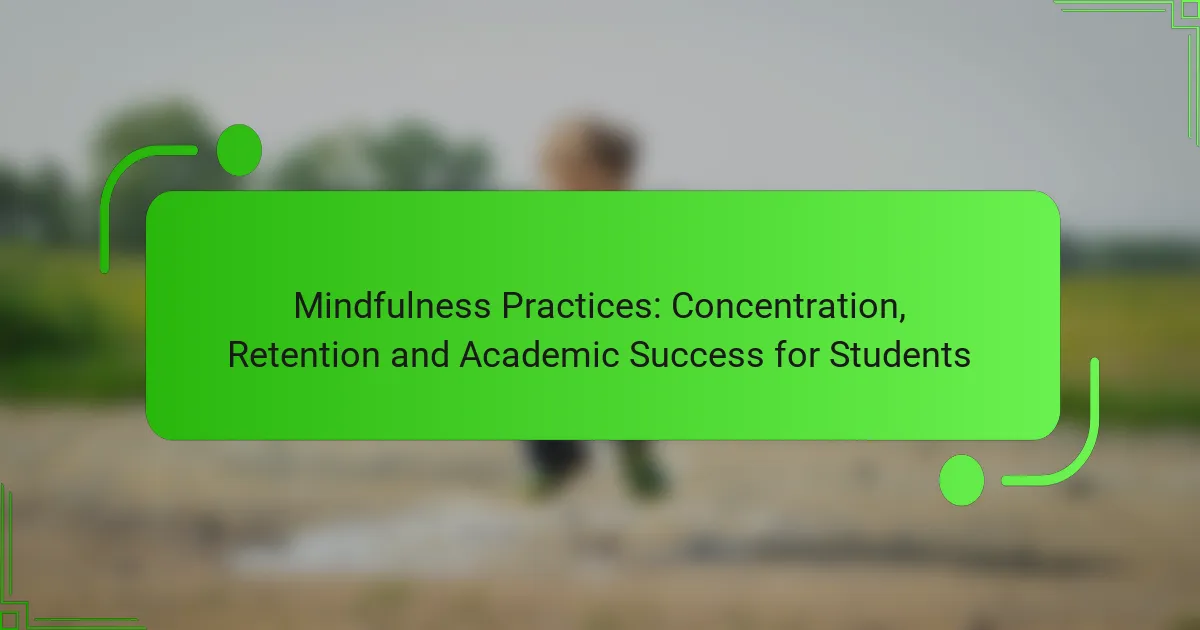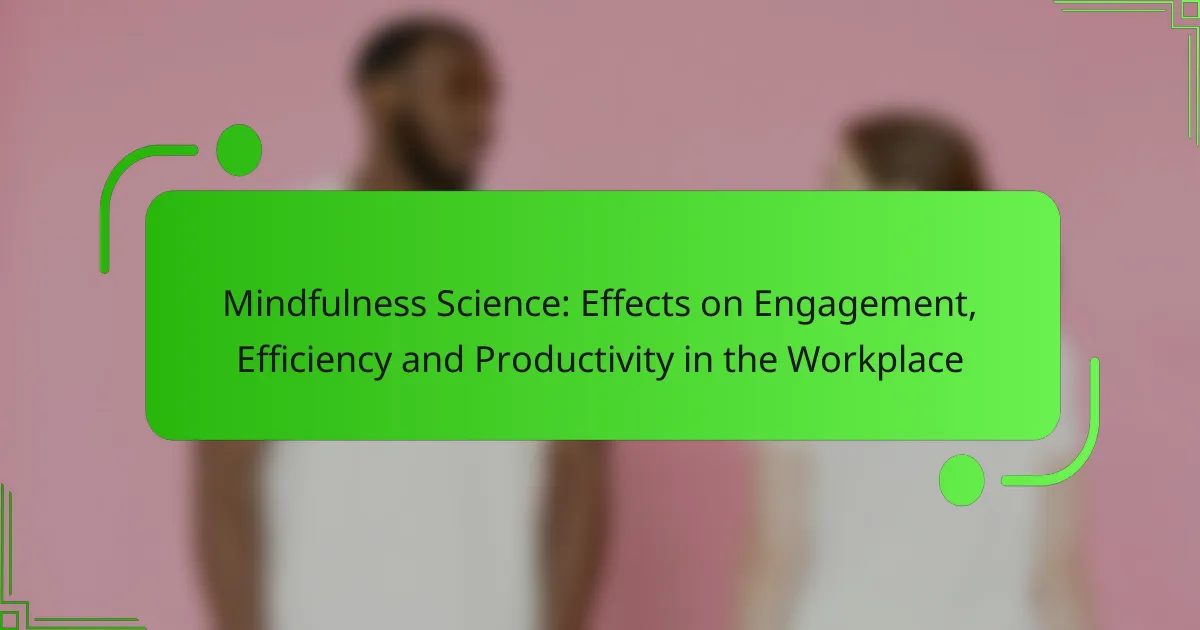Mindfulness practices play a crucial role in enhancing students’ concentration and retention, ultimately leading to greater academic success. By incorporating techniques such as meditation and mindful breathing, students can train their minds to focus on the present moment, reducing distractions and improving cognitive function. Additionally, practices like visualization and mindful note-taking reinforce memory and learning outcomes, enabling students to manage their studies more effectively.

How can mindfulness practices improve concentration for students?
Mindfulness practices can significantly enhance concentration for students by training the mind to focus on the present moment. Techniques such as meditation, mindful breathing, and structured study sessions help reduce distractions and improve overall cognitive function.
Increased focus through meditation
Meditation fosters a heightened state of awareness, allowing students to concentrate better on their studies. Regular practice, even for short periods, can lead to improved attention spans and reduced mind-wandering.
To get started, students can dedicate 5-10 minutes daily to sit quietly and focus on their breath or a specific thought. Gradually increasing this time can yield even greater benefits.
Mindful breathing techniques
Mindful breathing techniques are effective tools for enhancing concentration. By focusing on their breath, students can calm their minds and reduce anxiety, which often distracts from studying.
A simple technique involves inhaling deeply for a count of four, holding for four, and exhaling for four. Practicing this for a few minutes before studying can help clear the mind and improve focus.
Structured study sessions
Implementing structured study sessions can significantly boost concentration. By breaking study time into manageable blocks—such as 25 minutes of focused work followed by a 5-minute break—students can maintain higher levels of attention.
Using tools like the Pomodoro Technique encourages regular breaks, which help prevent burnout and keep the mind fresh. This method can be particularly effective for students juggling multiple subjects or assignments.

What mindfulness techniques enhance retention in academic settings?
Mindfulness techniques such as visualization, journaling, and mindful note-taking can significantly enhance retention in academic environments. These practices help students focus their attention, reinforce memory, and improve overall learning outcomes.
Visualization strategies
Visualization strategies involve creating mental images to represent concepts or information. By picturing data or ideas, students can strengthen their memory and recall abilities. For example, a student might visualize a diagram of a biological process to better understand and remember it.
To implement visualization, students can use techniques like mind mapping or drawing charts. These methods can help organize thoughts visually, making complex information more digestible. Regular practice can lead to improved retention rates and deeper understanding.
Journaling for memory reinforcement
Journaling serves as a powerful tool for memory reinforcement by encouraging students to reflect on what they learn. Writing about academic topics helps solidify knowledge and creates a personal connection to the material. Students can benefit from daily or weekly entries summarizing key concepts and insights.
To maximize the effectiveness of journaling, students should focus on summarizing information in their own words and noting questions or areas of confusion. This active engagement with the material can lead to better retention and a clearer understanding of subjects.
Mindful note-taking methods
Mindful note-taking methods emphasize active listening and engagement during lectures or study sessions. Techniques such as the Cornell method or outlining can help students organize information effectively while promoting retention. By focusing on key points and summarizing them, students can enhance their understanding and recall.
Students should avoid transcribing lectures verbatim; instead, they should aim to capture the essence of the material. Reviewing notes shortly after class and incorporating personal insights can further reinforce learning and improve retention over time.

How do mindfulness practices contribute to academic success?
Mindfulness practices enhance academic success by improving concentration, retention, and overall well-being. By fostering a focused mindset, students can better manage their studies and cope with the pressures of academic life.
Improved stress management
Mindfulness practices help students manage stress effectively by promoting relaxation and reducing anxiety. Techniques such as deep breathing, meditation, and body scans can lower cortisol levels, leading to a calmer state of mind.
Students can incorporate short mindfulness sessions into their daily routines, especially before exams or major assignments. Even a few minutes of focused breathing can significantly decrease stress levels and improve performance.
Enhanced emotional regulation
Practicing mindfulness allows students to recognize and regulate their emotions better. By becoming aware of their feelings, students can respond to challenges more thoughtfully rather than react impulsively.
For example, when faced with frustration during difficult coursework, a mindful approach can help students pause and reassess their strategies, leading to more productive outcomes. Regular practice can build resilience, making it easier to handle emotional ups and downs.
Better time management skills
Mindfulness encourages students to prioritize tasks and manage their time more effectively. By being present and focused, students can identify what needs immediate attention and allocate their time accordingly.
Creating a daily schedule that includes mindfulness breaks can enhance productivity. Students should aim to set aside specific times for study, relaxation, and self-reflection, ensuring a balanced approach to their academic responsibilities.

What are the prerequisites for implementing mindfulness in education?
To effectively implement mindfulness in education, educators and students need a foundational understanding of mindfulness concepts and access to appropriate resources. These prerequisites ensure that mindfulness practices can be integrated into the academic environment to enhance concentration, retention, and overall success.
Understanding of mindfulness concepts
A solid grasp of mindfulness concepts is essential for both educators and students. Mindfulness involves being present and fully engaged in the moment, which can significantly improve focus and reduce stress. Educators should familiarize themselves with techniques such as breath awareness, body scans, and mindful observation to teach these practices effectively.
Workshops or training sessions can provide valuable insights into mindfulness principles. It’s beneficial for educators to practice mindfulness themselves, as personal experience can enhance their ability to guide students. Simple practices, like starting each class with a brief mindfulness exercise, can help cultivate a mindful atmosphere.
Access to mindfulness resources
Access to mindfulness resources is crucial for successful implementation in educational settings. This includes materials such as guided meditation recordings, mindfulness apps, and books that provide strategies for both educators and students. Schools can consider investing in subscriptions to popular mindfulness platforms that offer structured programs.
Additionally, creating a dedicated space for mindfulness practice within the school can encourage participation. This space should be quiet and comfortable, allowing students to engage in mindfulness exercises without distractions. Collaborating with local mindfulness organizations can also provide workshops and resources tailored to the needs of students and educators.

Which mindfulness programs are effective for students?
Effective mindfulness programs for students focus on enhancing concentration, retention, and overall academic success. Programs like Headspace for Students, Calm Schools Program, and Mindful Schools curriculum provide structured approaches to integrate mindfulness into daily routines.
Headspace for Students
Headspace for Students offers a tailored version of the popular mindfulness app specifically designed for educational settings. It includes guided meditations, sleep aids, and focus exercises that can help students manage stress and improve their concentration.
Schools can access this program for free or at a reduced rate, making it an accessible option for many educational institutions. Students can engage with the app individually or as part of classroom activities, promoting a culture of mindfulness within the school.
Calm Schools Program
The Calm Schools Program provides resources for teachers to incorporate mindfulness into their classrooms. This program includes lesson plans, guided meditations, and breathing exercises that help students develop emotional regulation and focus.
By integrating mindfulness practices into daily routines, students can learn to manage anxiety and improve their academic performance. Schools can subscribe to the program, which often includes training for educators to effectively implement the techniques.
Mindful Schools curriculum
Mindful Schools offers a comprehensive curriculum that teaches mindfulness to children and adolescents. This program focuses on developing attention, emotional awareness, and resilience through structured lessons and activities.
Classes typically include interactive exercises, discussions, and practices that students can use in their daily lives. Schools can adopt this curriculum to foster a supportive environment that encourages mindfulness as a tool for academic and personal growth.

How can educators incorporate mindfulness into their teaching?
Educators can effectively incorporate mindfulness into their teaching by integrating specific practices that enhance focus and emotional regulation. This approach not only supports students’ academic success but also fosters a more positive learning environment.
Integrating mindfulness into lesson plans
To integrate mindfulness into lesson plans, educators can start by including short mindfulness exercises at the beginning or end of classes. For example, a simple breathing exercise lasting two to five minutes can help students center themselves and prepare for learning.
Additionally, teachers can weave mindfulness themes into subjects by encouraging reflective practices. Assignments that prompt students to journal about their thoughts or feelings related to the material can deepen their engagement and retention.
Creating a mindful classroom environment
A mindful classroom environment promotes calmness and focus. This can be achieved by establishing a designated quiet area where students can take breaks or practice mindfulness techniques when feeling overwhelmed.
Moreover, incorporating elements such as soft lighting, calming colors, and nature-inspired decor can enhance the atmosphere. Regularly reminding students to practice gratitude or positive affirmations can also contribute to a supportive and mindful classroom culture.



